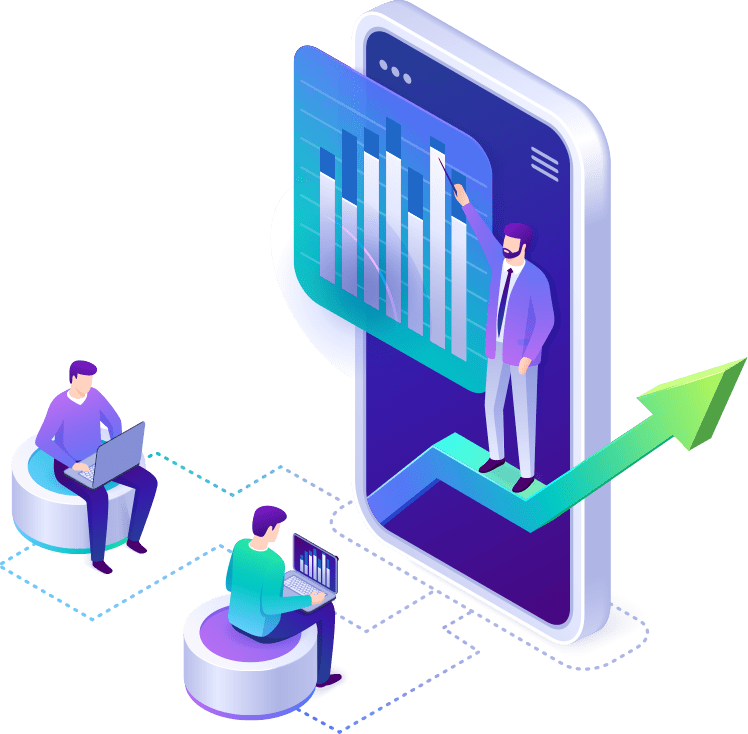
Adopt a Digital Transformation Plan in Three Easy Steps
Digital Transformation is the integration of Digital technology into all areas of a business, resulting in fundamental changes in how businesses operate and deliver value to customers. It’s a journey of continuous improvement that enables organizations to thrive in the digital economy.
It begins with a focus on the customer, and it requires a customer-centric culture throughout the organization. It’s about creating new, innovative ways to serve customers better and faster and to create new sources of value. In order to succeed, businesses need to embrace digital technologies such as the cloud, artificial intelligence, the Internet of Things, and big data.
Digital Transformation is not just about adopting new technologies, but about using them to create new business models, processes, and experiences that are more efficient, effective, and engaging. It’s almost transforming your business for the digital age.
If we were to codify the above characteristics, we would say they produce the three basic dimensions of implementing Digital Transformation Strategy:
- Customer Focused
- The process of Agile
- Technology at the core
Customer Focused or Passion for Customer :
Delivering true value to the consumer is what passion or obsession for the customer entails. This requires considering things from the customer’s perspective. Having a passion for customers means that businesses are not only aware of their customers, but they also care about them and are always looking for ways to improve the customer experience.
Only from this vantage point can one comprehend the concept of “customer value.” Otherwise, defining it is quite tough. Let’s look at two examples of good perspectives.
Example 1 :
A CIO of an insurance company partnered with a leading Bank to automate/digitized the insurance Claim application process in a single and straightforward user experience, because the insurance company understood what “customer value” really meant to them.
Example 2 :
Jio is launching an ultimate “Premium Broadband Service” with unlimited data (which, by the way, falls under the “Transparent Policy”), in this plan, the client can feel the “genuine serenity,” which provides them the ultimate personalization of choosing a variety of options such as streaming 4k videos, uploading/downloading documents for business needs, safe browsing, enjoying Netflix, and considerably more.
It goes without saying that giving value to customers should be key to your Digital Transformation strategy and deciding your business model. This technique has resulted in profitability and other financial KPIs.
The Agile Process :
Agile refers to the ability to move fast and readily. In a broader sense, agile is a method of coping with uncertainties or obstacles in an effective and successful manner. It shows adaptability and change responsiveness.
Agile is tried and tested, and it works
McKinsey says that successful organizations are more likely to employ agile ways of working during their transformations.
the basic characteristics an “Agile Organisation” has are:
- focus on business results that provide unique consumer value
- It gives you the freedom of experimentation, to test and learn in order to deal with uncertainties
- Adaptable to market changes
- Strategic use of information data is required, and decisions should be based on data.
- Agile promotes regular communication, continuous cooperation, and feedback sessions.
It is not easy to transform your organization to become more agile. It will need bold leaders and a strong commitment to maintain the course and avoid becoming caught in transition due to the constraints of compromise, cutting shortcuts, and telling oneself that “it’s a step in the right direction.”
Technology at the Core :
Digital technology is prompting businesses across all industries to rethink the fundamental topic of consumer value. Please remember the prior scenario with the insurance and bank digitized customer experience.
At the heart, digital technology implies ensuring that technology serves as a facilitator for the other two dimensions:
- Allowing customer passion through providing genuine customer value with an emphasis on the essential values of peace of mind, control, and personalization
- Enabling the organization to be as agile as possible
Amazon Prime is an excellent illustration of both “Technology at the Core” and Digital Transformation in general. It recognized that customer value exists in original content, so it transitioned from a content distributor to a content producer, all while allowing customers to feel in control of their charging by being able to cancel and restart subscriptions at any time, having peace of mind that “it will always be there when required” and with no hidden costs, and delivering personalized experiences (more than 80 percent of watched TV shows come from the personalization engine).
Credits & References
This post has been inspired by distributed works of different books, that deal with most of the points referenced here:
- “Lean Enterprise: How High-Performance Organizations Innovate at Scale” by Jez Humble, Joanne Molesky, and Barry O’Reilly
- “Digital Transformation Game Plan” by Gary O‘Brien, Guo Xiao, and Mike Mason

